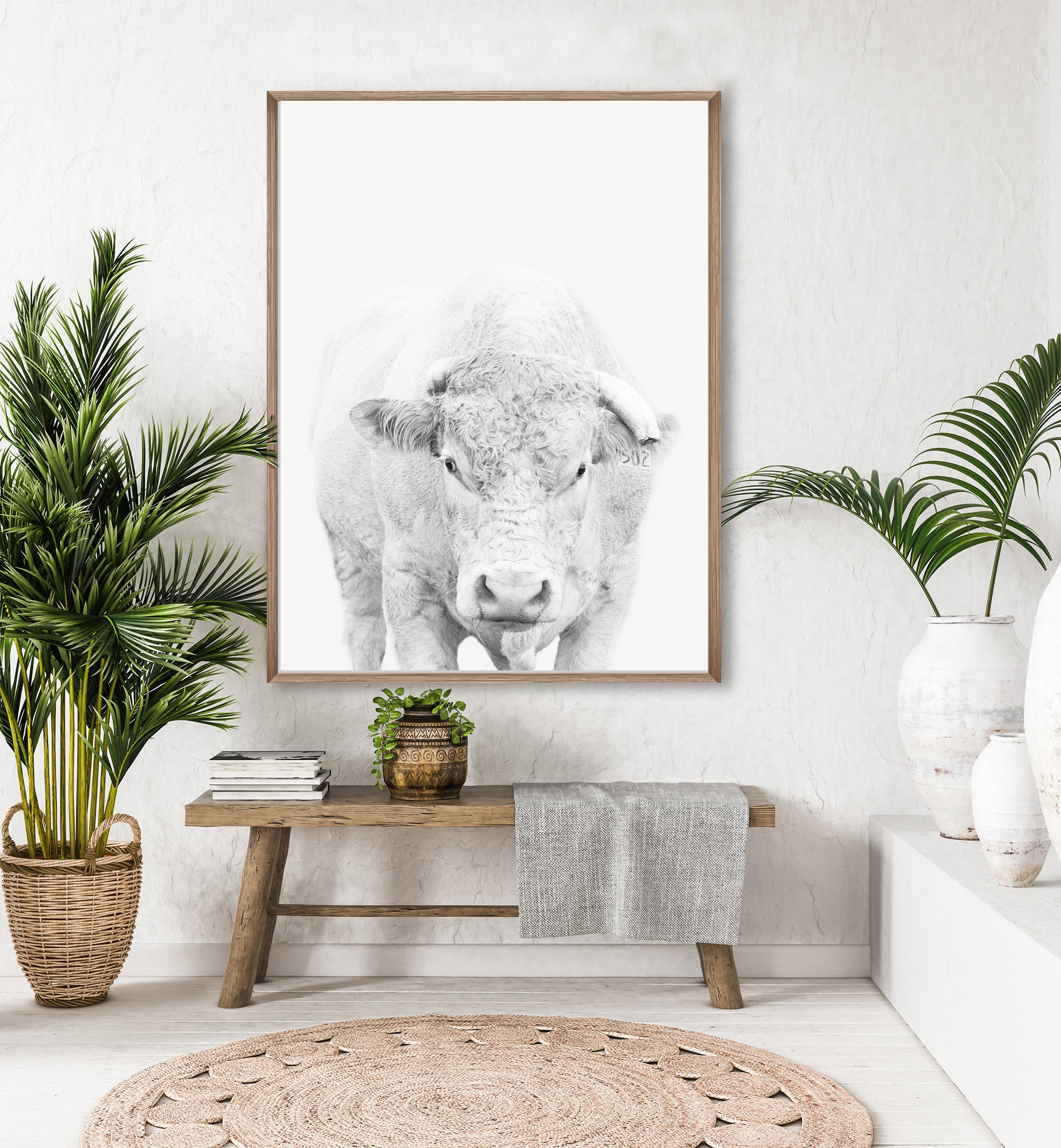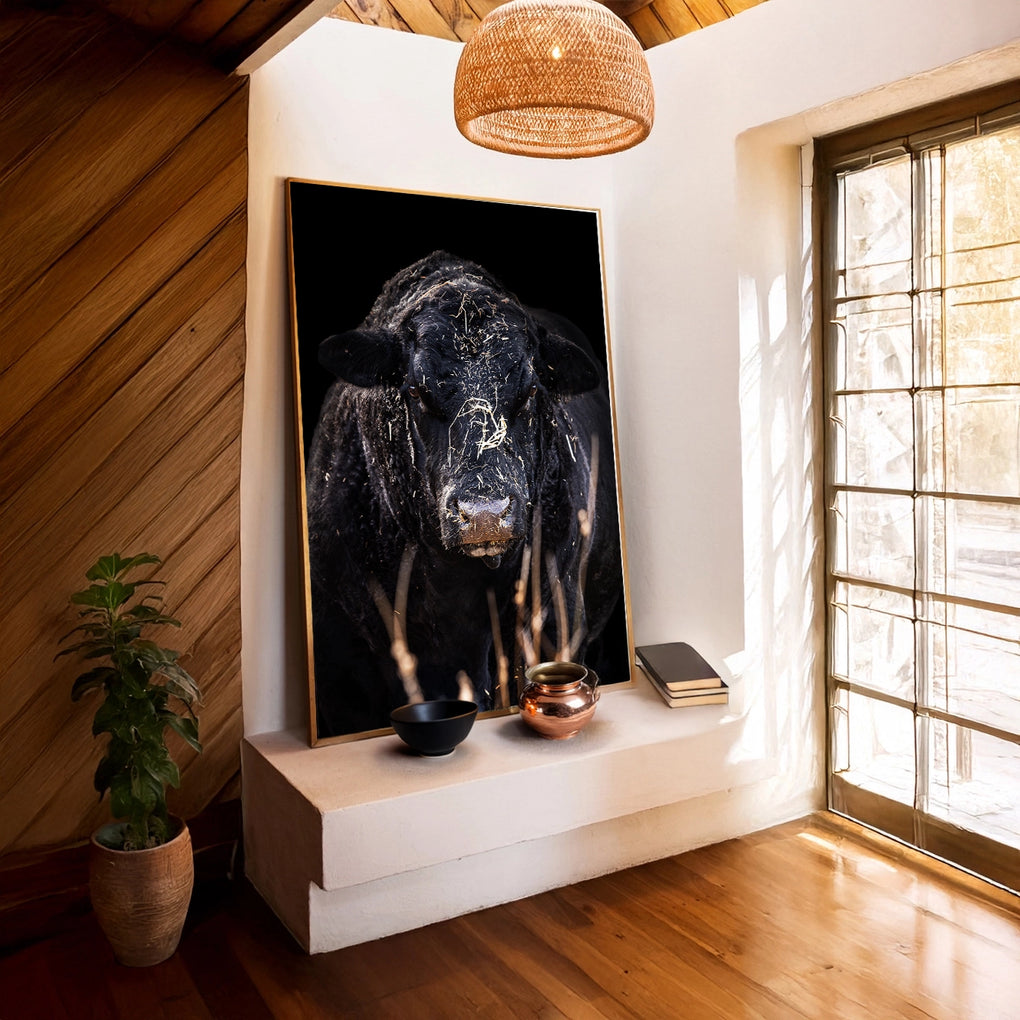Canvas Prints vs Fine Art Prints: How to Choose the Right Wall Art
These days, canvas prints are everywhere, in living rooms, offices, cafés, and galleries. But one question I often get asked is:
“What’s the difference between a canvas print and a fine art print?”
While both are beautiful ways to display photography or artwork, they differ in materials, presentation, and even the way they feel in a space. Let’s break it down.
What Is a Canvas Print?
A canvas print is not the same as a canvas painting. Instead, it’s an image (photograph or artwork) printed using a professional inkjet printer onto canvas fabric, then stretched tightly over a wooden frame (called stretcher bars).
Once printed, the canvas is wrapped around the edges so the image flows over the sides, this means it arrives ready to hang with no extra framing required.

Holding "Bonnie" Canvas.
What Is Canvas Made Of?
Traditionally, canvas was made from hemp, but today it’s usually crafted from cotton, polyester, or a cotton/poly blend.
I use a cotton/poly blend for its durability, flexibility, and ability to stretch without warping. To make sure the artwork lasts for decades, I also apply a museum-grade lacquer that:
-
Protects against moisture and scratches
-
Shields from harmful UV light (so colours stay vibrant)
The result? A rich, textured surface with depth and character that works beautifully with photography.
What Is a Fine Art Print?
A fine art print is created on museum-quality paper (archival, acid-free) rather than fabric. I use a natural white fine art paper with a lightly textured matte finish, which produces sharp, detailed images with vivid, true-to-life colours.
Because the surface is delicate, fine art prints are almost always framed behind glass or acrylic for protection. This not only shields the paper from dust, moisture, and handling but also elevates the overall presentation.
Holding "Garden Party" Fine Art Print, to be sent to a framer.

Framing & Presentation
Fine Art Prints work beautifully in frames, which can tie into your décor and influence the mood of the artwork:
-
Sleek black frames draw attention to the image itself.
-
White frames create a fresh, clean, coastal or contemporary feel.
-
Timber frames add warmth and an organic touch.
-
Decorative or ornate frames add personality and drama.
Framing choices matter — they connect the artwork with your furniture, wall colour, and overall style.

 Print Featured "Bull Behind Tussock" Framed in Black.
Print Featured "Bull Behind Tussock" Framed in Black.
 Large Framed Print of La Vintage Hydrangea framed in a timber frame.
Large Framed Print of La Vintage Hydrangea framed in a timber frame.
Canvas Prints, on the other hand, are more versatile in style. Their frameless edges work well in any space, from modern minimalism to rustic country. They’re lightweight, easy to hang, and give a clean, contemporary look without reflections from glass.
You can also choose to add a floating frame to a canvas. This is a modern, gallery-style option where the canvas sits slightly recessed inside a frame (often in black, white, or timber), creating the illusion that it’s “floating” within the frame. Floating frames add a premium finish while keeping the texture and depth of the canvas visible.
Print Featured: Tatanka - Timber floating Frame.


Quick Comparison
| Feature | Canvas Prints | Fine Art Prints |
|---|---|---|
| Material | Cotton/poly canvas fabric | Museum-quality fine art paper |
| Finish | Textured matte/lustre | Smooth or lightly textured matte |
| Framing | Not required (optional floating frame) | Always framed (glass/acrylic) |
| Glare | No glare or reflections | Possible glare from glass |
| Durability | UV and moisture resistant | Protected by frame |
| Weight | Lightweight | Heavier (due to frame/glass) |
| Style | Contemporary, frameless or floating frame | Classic, customisable with black, white, timber, or ornate frames |
Which One Should You Choose?
It really comes down to the style you love and how you want your artwork to feel in your space:
-
Choose canvas if you want a ready-to-hang, frameless piece or a premium floating frame look with modern depth.
-
Choose fine art prints if you want a classic, framed presentation with a traditional gallery feel.
Both will bring beauty to your walls, it’s just about finding the perfect match for your home or office.
You can also check out a reel I did on Instagram that explains it further.






